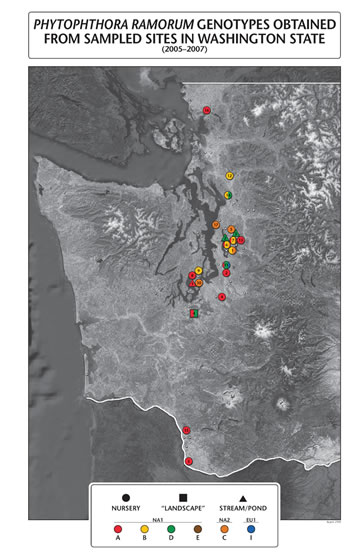The APHIS confirmed nursery protocol (CNP) appears to be effective in eradicating the pathogen from infected nurseries in some instances. Fifteen of the 27 positive nurseries were negative for P. ramorum in subsequent years after completing the CNP. On the other hand, 12 nurseries were repeatedly positive for two or more years in a row. At only one repeat-positive nursery did a new genotype appear in the second positive year that was not present in the nursery during the first positive year. Thus it is unclear if inoculum was persisting from year to year or if the same genotypes that were initially detected at 11 of the repeat nurseries was reintroduced in subsequent years. At the six nurseries showing the most genetic variability, three different genotypes were detected in a single year.
from the February 2009 COMTF newsletter
